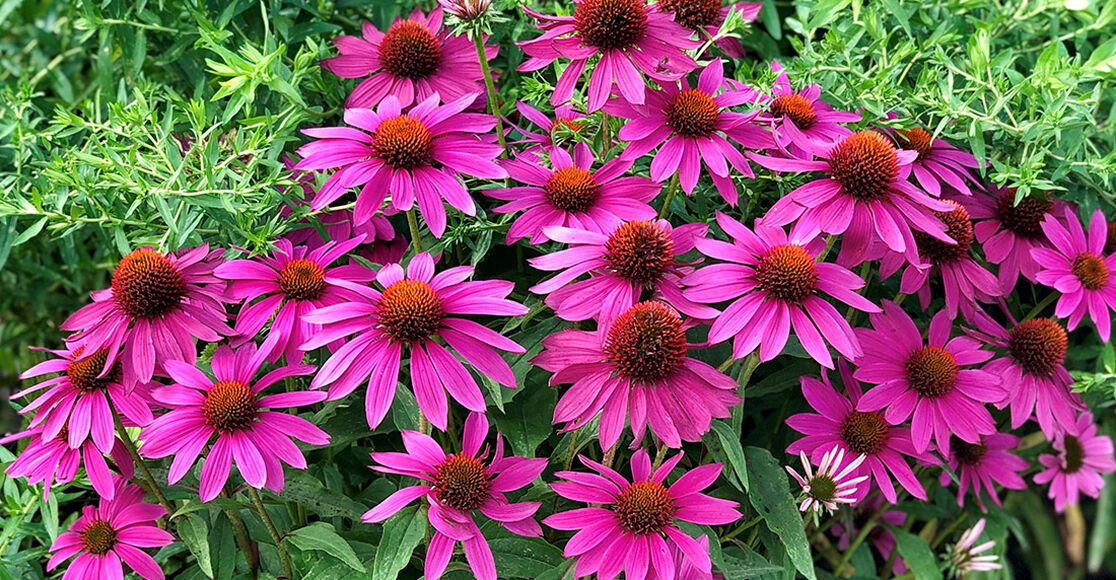Niki Jabbour
Perennials are plants that return year after year offering beautiful flowers or foliage to the landscape. Even those with tiny spaces can enjoy a perennial garden when they pick types and cultivars that are compact. When shopping for perennials, read plant labels carefully to discover the mature size and spread of each plant. It’s also important to choose perennials that have different flowering periods. Some flower in spring, others in early, mid or late summer, and still others bloom in autumn. Including perennials with varied bloom times means the longest show of colour for you.
Here are 7 perennials perfect for small space gardens:
Perennial geraniums (zone 3 to 9)
Don’t let the delicate-looking flowers of perennial geraniums fool you, these are robust perennials that are hardy, long blooming, and pollinator friendly. They come in a wide assortment of plant sizes and colours with many forming compact mounds of tidy foliage with blooms of purple, lavender, soft pink, or fuchsia. Many perennial geraniums are also forgiving of partial shade and thrive when grown in a woodland setting. Outstanding cultivars that bloom for months include ‘Brookside’, ‘Patricia’, and ‘Rozanne’.
Coral Bells (zones 4 to 9)
Coral bells are often used as filler or accent perennials, but these compact plants deserve the spotlight. First, the range of foliage colours is ridiculous! You’ll find them in every shade from lime green to bright red to peach to purple, as well as many bi-colours and unique variegations. But it’s not just the foliage, as the pretty bell-shaped blooms that emerge in early to mid-summer provide further interest and attract bees. Coral bells are also pest and disease resistant, and seldom bothered by deer. With their one to two foot tall mounds of foliage, there is room for a few plants in even the smallest of spaces.
Coneflowers (zone 4 to 9)
While traditional coneflowers grow three to four feet tall, there have been many recent introductions that are extremely compact, growing less than two feet tall. Like their taller cousins, the dwarf cultivars grow best in full sun and well-drained soil. They’re also extremely attractive to butterflies and bumblebees. ‘PowWow Wild Berry’ is a dwarf variety that only grows about eighteen inches tall yet produces dozens of large purple-pink flowers from mid to late summer. There is also a new ‘PowWow White’ coneflower that has the same compact growth but with creamy white blooms. ‘Lakota Fire’ is incredibly unique with large blooms in a mix of red, orange, and pink - all on the same dwarf plant!
Rudbeckia (zones 4 to 9)
Native to North America, Rudbeckias are beloved for their bright gold petals and chocolate center cones. They’re extremely hardy and drought, insect, disease and deer resistant. Plus, they flower for four to six weeks! ‘Little Goldstar’ is perfect for small gardens and grows just sixteen inches tall but produces wide drifts of orange-yellow flowers.
Asters (zones 4 to 8)
Flowering from late summer through late autumn, asters are an important source of autumn nectar and pollen for bees and butterflies. Certain asters grow up to five feet tall, while others stay small and grow just a foot tall. When picking an aster for a small space, read plant labels carefully to ensure you’re getting a compact cultivar. ‘Purple Dome’ is one of the most popular asters to grow with glowing purple petals and golden centers. The plants reach eighteen to twenty inches tall and can grow up to three feet across.
Dwarf fountain grass (zones 5 to 9)
Ornamental grasses add form, texture, and sound to the landscape. Yes, sound! As the foliage is rustled by the wind, it makes a soothing sound. Yet many grasses grow tall - often six to eight feet tall - and it’s hard to fit them in a small space. This is where ‘Little Bunny’ comes in handy. It’s a beautiful cultivar of dwarf foundation grass that grows eighteen inches tall and twenty inches wide. In mid-summer the soft, bottlebrush seed heads appear and in autumn, the grassy foliage turns golden yellow.
Hosta (zones 3 to 9)
Hosta are a shade garden staple with wide leaves in various shades of green, gold, and white. They can be a solid hue or variegated and often grow two to three feet tall and three to four feet wide. Yet there are dozens of miniature hosta varieties which grow very small. ‘Blue Mouse Ears’ is a charming hosta, perfect for the front of a shady garden bed. It grows just six inches tall and ten inches wide with blue-green leaves. ‘Curly Fries’ is a stunner with rippled narrow golden leaves and tops out at just ten inches tall.
